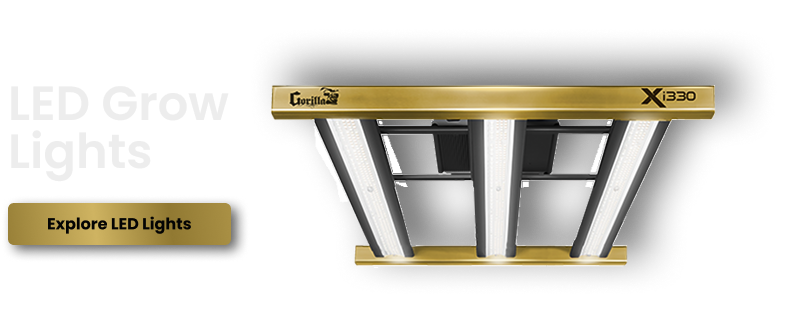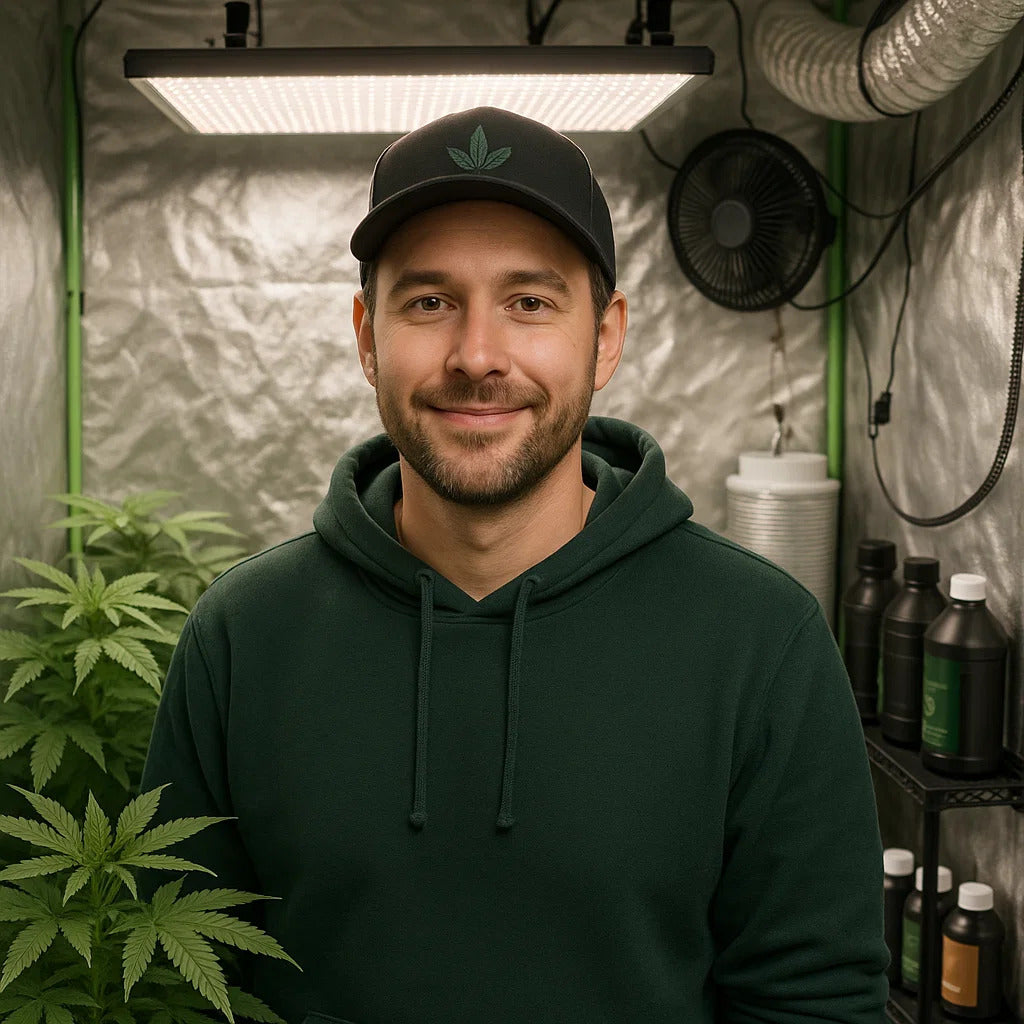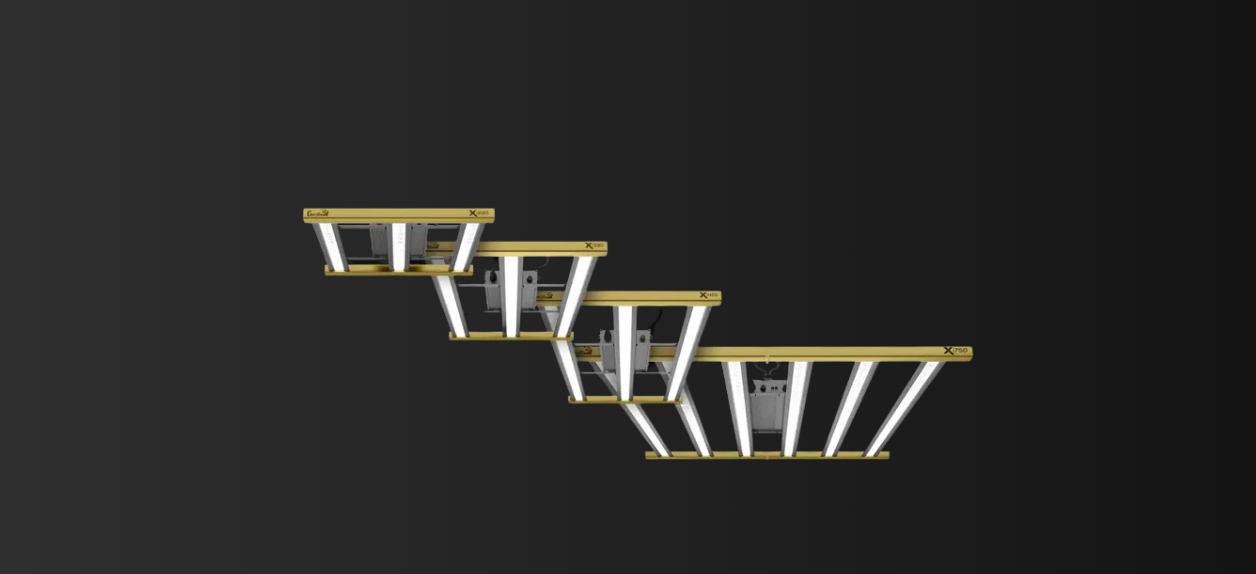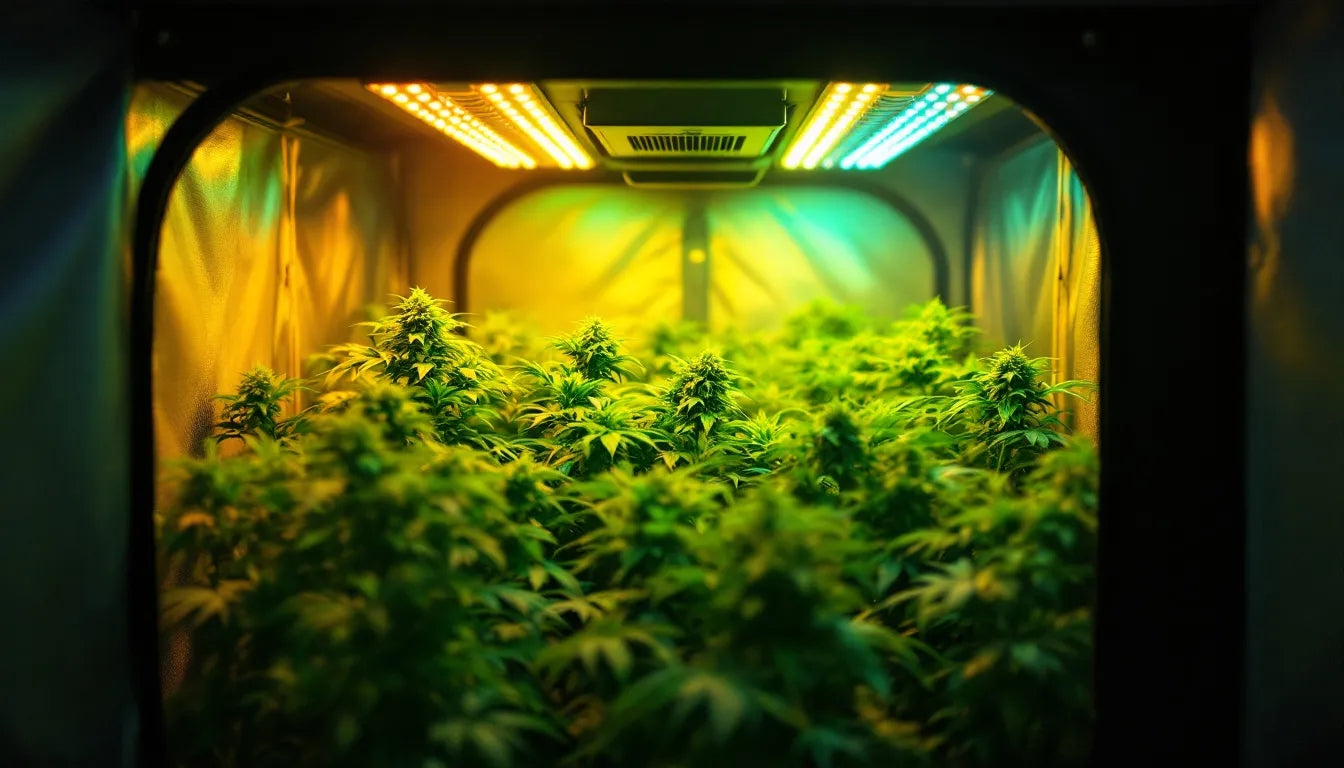
Benefits of Using LED Grow Lights for Indoor Growing Success
LED grow lights have transformed indoor gardening from an expensive hobby into an efficient, profitable venture. If you're wondering whether switching to LED technology is worth the investment, the answer is a resounding yes. Modern LED systems deliver superior plant growth while slashing energy costs by up to 70% compared to traditional lighting.
The benefits extend far beyond lower electricity bills. From precise spectrum control that maximizes yields to cool operation that simplifies climate management, LED technology addresses every pain point that frustrated growers using older lighting systems. Let's explore why serious cultivators worldwide are making the switch to LED grow lights.
Dramatic Energy Savings and Lower Operating Costs
LED grow lights consume 50-70% less electricity than HID (High-Intensity Discharge) systems while delivering equal or better growing results. A 400-watt LED system provides the same effective light output as a 600-1000 watt HID setup, translating to significant monthly savings on your power bill.
The efficiency gains compound over time. While your initial investment in quality LEDs may be higher than budget alternatives, most growers recover costs within 12-18 months through reduced electricity consumption alone. After that, you're enjoying pure savings while your competitors struggle with rising energy costs.

Consider the real-world impact: A 600-watt HID system running 12 hours daily at $0.12 per kWh costs approximately $26 monthly. An equivalent LED system drawing 300 watts costs just $13 monthly—saving $156 annually per light. Multiple those savings across several lights and multiple years, and you're looking at thousands in recovered costs.
Advanced LED systems like the Gorilla GXi Series achieve efficiency ratings exceeding 2.7 µmol/J, meaning they convert more electrical energy into usable plant light while wasting less as heat. This targeted efficiency makes LEDs the most cost-effective lighting solution for both hobby growers and commercial operations.
Exceptional Lifespan Eliminates Frequent Replacements
Quality LED grow lights last 50,000 to 75,000+ hours of operation—that's 5 to 10 years of continuous use without replacement. Compare this to HID bulbs that degrade rapidly after just 6-12 months, requiring frequent and expensive replacements that add up quickly.
The long lifespan means more than just convenience. It represents thousands of dollars in savings over the life of your growing operation. HID growers spend $100-200 per bulb replacement, often needing new bulbs twice yearly. Over five years, that's $1,000-2,000 per light fixture just in replacement costs—money that LED growers pocket instead.
LED diodes maintain consistent light output throughout their lifespan, unlike HID bulbs that lose 20-30% intensity in their first year. This means your plants receive stable, reliable light from day one through year seven, ensuring predictable yields and eliminating the need to constantly adjust light positioning or intensity.
Full-Spectrum Control for Maximum Plant Performance
Modern LED technology allows precise control over light spectrum, delivering exactly the wavelengths plants need at each growth stage while eliminating wasted energy on unusable light. This targeted approach produces healthier plants, faster growth, and significantly higher yields compared to broad-spectrum traditional lighting.
Blue wavelengths (400-500nm) promote compact vegetative growth with tight internodal spacing and robust root development. Red wavelengths (600-700nm) trigger flowering responses and maximize fruit production. Far-red and infrared wavelengths penetrate deeper into the canopy, increasing flower density during critical bloom phases.
The Gorilla Xi420 LED Grow Light exemplifies advanced spectrum control with tri-channel technology. Growers can independently adjust blue spectrum for vegetative vigor, red spectrum for flowering intensity, and activate UV/IR channels only when needed—eliminating wasted energy and preventing unwanted plant stress during earlier growth stages.

Unlike white light LEDs originally designed for home illumination, targeted full-spectrum systems engineered specifically for horticulture deliver superior results. These specialized systems focus on wavelengths plants actually absorb, maximizing photosynthetic efficiency while white LEDs waste significant energy producing visible light that plants can't utilize.
UV wavelengths increase resin production and secondary metabolites, enhancing potency and terpene profiles in flowering plants. This controlled stress response triggers beneficial plant defenses that improve final product quality—a feature impossible with traditional lighting that lacks precise wavelength control.
Cooler Operation Simplifies Climate Management
LED grow lights produce dramatically less heat than HID systems, transforming indoor climate control from a constant battle into a manageable task. While 600-watt HID systems generate intense heat requiring elaborate ventilation and cooling setups, equivalent LED systems run cool enough to position closer to plants without risk of heat stress or leaf burn.
Reduced heat output means lower air conditioning costs, simpler ventilation requirements, and more stable growing environments. Many growers report cutting their cooling expenses by 40-60% after switching to LED technology, with some small-scale operations eliminating the need for dedicated AC units entirely.
The strategic heat management in premium systems directs warmth away from plants while maintaining perfect light intensity. The Xi750 LED Grow Light achieves this through advanced heat dissipation designs and remotely-mountable drivers that position heat-generating components outside the growing space, creating the ideal environment for explosive growth.
Cooler operation also reduces fire hazards and improves safety in your growing space. HID systems run dangerously hot, with surface temperatures exceeding 400°F that can ignite nearby materials. LED surfaces remain cool to the touch during operation, providing peace of mind and safer conditions for daily maintenance.
Lower ambient temperatures improve plant health in multiple ways. Heat stress causes plants to close their stomata, reducing photosynthesis and slowing growth. Cooler LED operation maintains optimal leaf surface temperatures, keeping stomata open and photosynthesis running at peak efficiency throughout light periods. Learn more about managing optimal growing temperatures in our guide on LED grow light heat output.
Higher Yields Through Optimized Light Penetration
LED systems deliver directional light with superior canopy penetration compared to HID bulbs that waste energy radiating in all directions. This focused output ensures lower foliage and side branches receive adequate light, promoting even growth throughout the plant and eliminating shaded areas that produce weak, underdeveloped growth.
Improved light penetration translates directly to increased yields. Plants develop robust structure from top to bottom, with productive flowering sites throughout the canopy rather than just at the top. Many growers report yield increases of 20-40% after switching to quality LED systems, even without changing other growing parameters.
The even PPFD (Photosynthetic Photon Flux Density) distribution across the coverage area ensures every plant receives optimal light intensity. Unlike single-point HID sources that create bright spots directly underneath while leaving edges dim, well-designed LED fixtures provide uniform coverage that maximizes production across your entire growing space.
Strategic light positioning becomes easier with cool-running LEDs. Position lights 12-18 inches from canopy tops without heat stress concerns, intensifying light delivery during critical flowering phases. This close positioning dramatically increases PPFD at the canopy level, driving faster growth and heavier harvests. For more strategies on maximizing production, explore our guide on 4x4 grow tent yields.
Smart Controls and Automation Features
Modern LED systems integrate intelligent controls that transform growing from constant manual work into precision agriculture. Smartphone connectivity allows you to monitor and adjust spectrum ratios, light intensity, and schedules from anywhere—perfect for busy growers managing multiple spaces or unable to access their setup daily.
Pre-programmed growth stage presets eliminate guesswork for beginners while offering advanced customization for experienced cultivators. Simply select your plant's current stage, and the system automatically adjusts spectrum and intensity for optimal development. As plants mature, switch to the next preset with a single tap.
Sunrise/sunset technology gently ramps light intensity up and down, mimicking natural conditions that prevent light shock and reduce plant stress. This automated transition creates healthier plants with improved yields compared to harsh on/off switching that stresses plants twice daily.
The Xi220 LED Grow Light connects directly to the Gorilla Grow Tent App, providing wireless control over all advanced features without additional controllers or complicated setup. Set custom light schedules, track power consumption, and receive alerts about potential issues—all from your smartphone.
Automation extends beyond basic timing. Advanced systems monitor environmental conditions and adjust output accordingly, dimming during hot afternoons to reduce heat stress or intensifying during cool mornings to maintain optimal temperature. This intelligent response system optimizes conditions without constant manual intervention.
Environmentally Friendly and Sustainable Growing
LED technology supports sustainable cultivation through multiple environmental benefits. Reduced energy consumption means lower carbon emissions and smaller environmental footprint—crucial considerations as climate awareness grows and electricity grids strain under increasing demand.
The elimination of toxic materials makes LEDs safer for both growers and the environment. HID bulbs contain mercury and other hazardous substances requiring special disposal procedures. LED systems contain no toxic materials and are fully recyclable, supporting environmentally responsible growing practices.
Lower water consumption represents another often-overlooked benefit. Reduced heat output means less water evaporates from growing media and plants transpire less under cooler conditions. Many growers report 15-25% reduction in water usage after switching to LED technology—significant savings in regions facing water scarcity.
Extended equipment lifespan reduces waste dramatically. Consider that HID growers dispose of 10-20 bulbs over the time a single LED system operates, creating substantial e-waste. LED longevity means fewer replacements, less packaging waste, and reduced environmental impact from manufacturing and shipping replacement components.
Energy monitoring features in advanced systems help optimize efficiency further. Track power consumption patterns and identify opportunities to reduce waste without sacrificing results. Some systems provide detailed analytics showing energy use trends over time, enabling data-driven decisions that improve both yields and sustainability. Read more about LED electricity usage and environmental impact.
Versatile Applications for Any Growing Space
LED technology scales perfectly from small hobby setups to large commercial operations. Compact models like the Xi330 LED Grow Light fit perfectly in 2'x3' to 3'x3' spaces, providing serious performance in tight quarters that would be impossible with heat-intensive HID systems.
The wide range of sizes and configurations means you'll find the perfect LED solution regardless of your growing space. Single-plant micro grows, spare closet gardens, dedicated grow rooms, or warehouse-scale operations—LED technology adapts to your needs rather than forcing you to compromise.
Modular expandability allows you to start small and scale up as your operation grows. Begin with a single fixture in a small tent, then add additional units as you expand into larger spaces. Unlike HID systems requiring specialized electrical infrastructure and cooling systems, LEDs work with standard household outlets and minimal supporting equipment.
The compatibility with diverse growing methods makes LEDs universally applicable. Whether you're growing in soil, coco coir, hydroponic systems, or aeroponics, LED technology delivers optimal results. Different plant types—from leafy greens and herbs to flowering plants and fruiting crops—all thrive under proper LED illumination. Check out our comprehensive grow tent setup guide to integrate LEDs into your complete growing system.
Aesthetic integration appeals to home growers who want growing spaces that complement their living areas. Sleek, modern LED designs look professional rather than industrial, making it easier to maintain attractive indoor gardens that don't detract from home décor.
Improved Safety and Reduced Fire Risk
Safety improvements represent one of the most important yet underappreciated LED benefits. HID systems operate at dangerously high temperatures, with bulb surfaces exceeding 400°F and ballasts generating intense heat that can ignite nearby materials. LED systems remain cool to the touch during operation, dramatically reducing fire hazards.
The elimination of ballasts removes another potential failure point. HID ballasts are notorious for failures that create electrical hazards, produce dangerous arcing, and sometimes catch fire. Modern LED drivers are solid-state devices with no moving parts, delivering reliable performance with minimal failure risk.
Lower voltage operation in many LED systems reduces electrical hazards. While HID systems require high-voltage ballasts and specialized wiring, many LED fixtures operate on standard household current with built-in safety features that prevent shorts and overloads.
The absence of glass bulbs eliminates breakage concerns. HID bulbs are fragile, and broken bulbs can explode, showering hot glass and releasing toxic mercury vapor. LED panels feature robust construction with shatter-resistant components that withstand bumps and impacts during routine maintenance.
Enhanced Plant Quality and Potency
Beyond increased yields, LED technology improves final product quality in measurable ways. Precise spectrum control enables growers to manipulate secondary metabolite production, enhancing flavors, aromas, and potency that distinguish premium products from commodity crops.
UV wavelengths trigger beneficial plant stress responses that increase resin production and essential oil content. Plants produce these compounds as natural sunscreen and pest defense, resulting in more aromatic herbs, more potent flowering plants, and more flavorful fruits and vegetables.
Consistent light quality throughout the LED's lifespan ensures every harvest meets the same quality standards. HID growers constantly compensate for degrading bulb output, making consistent results difficult. LED stability means your tenth harvest will match your first, building customer trust and brand reputation.
The elimination of hot spots prevents the bleached, damaged top colas that plague HID growers pushing their lights too close. LED's even distribution and cool operation enable intense light delivery without sacrificing quality, producing dense, properly colored flowers throughout the canopy.
Frequently Asked Questions
Do LED grow lights really save money compared to HID lights?
Yes, LED grow lights typically save 50-70% on electricity costs compared to HID systems while delivering superior results. Most growers recover their initial investment within 12-18 months through reduced power bills alone, then enjoy years of savings afterward. The long lifespan also eliminates frequent bulb replacement costs.
How long do LED grow lights actually last?
Quality LED grow lights last 50,000 to 75,000+ hours—approximately 5 to 10 years of continuous use. They maintain consistent output throughout their lifespan, unlike HID bulbs that degrade quickly. Premium systems with quality components like Mean Well drivers can exceed these numbers with proper maintenance.
Will switching to LED increase my yields?
Most growers report 20-40% yield increases after switching from HID to quality LED systems, even without changing other growing parameters. The combination of better light penetration, precise spectrum control, improved climate management, and consistent light output enables plants to reach their full genetic potential. Learn more about LED grow lights and plant growth.
Do LED grow lights produce enough heat to warm my grow space in winter?
LEDs produce significantly less heat than HID systems—a benefit in most situations but a potential consideration in cold climates. However, the heat they do produce is usually sufficient for small spaces, and any supplemental heating costs are offset many times over by electricity savings. Many growers find the easier climate control worth minor heating adjustments.
Are cheaper LED grow lights worth buying or should I invest in premium systems?
Premium LED systems deliver dramatically better results and longevity than budget alternatives. Cheap LEDs often use inferior components that fail quickly, produce inadequate light intensity, and waste energy. Quality systems like the Gorilla GXi Series use premium Samsung or OSRAM diodes and reliable drivers that provide consistent performance for years, making them significantly more cost-effective long-term.
Summary: Why LED Grow Lights Are the Clear Winner
LED grow lights deliver superior results while slashing energy costs by 50-70%, lasting 5-10 years without replacement, and providing precise spectrum control that maximizes both yields and quality. Cooler operation simplifies climate management, reduces fire risk, and enables closer positioning for intensified light delivery. Smart controls and environmental benefits make LEDs the sustainable, cost-effective choice for growers at every level.
Upgrade to Professional LED Technology Today
Ready to experience the transformative benefits of premium LED technology? The Gorilla GXi LED Grow Light Collection combines Northern California growing expertise with intelligent wireless control, delivering unmatched performance for hobby growers and commercial operators alike. From compact spaces to large-scale operations, our targeted full-spectrum systems maximize genetic potential while minimizing operating costs.
Explore our complete range of LED solutions designed by master growers for serious cultivators. Whether you need the concentrated power of the Xi220 for small spaces or the commanding intensity of the Xi750 for large grows, we offer the perfect lighting solution for your needs. Don't settle for outdated technology—invest in LED systems that deliver consistent results, dramatic savings, and years of reliable performance. Browse our collection today and transform your growing operation with professional-grade LED technology that pays for itself through superior yields and reduced operating costs.
For comprehensive setup guidance, check out our beginner's grow tent setup guide and learn how LED lights help plants grow to maximize your investment.

Lena Myles
I'm a mushroom enthusiast and home cook based in Oregon. I'm passionate about foraging and creating fungi-focused recipes, especially delicious, plant-based dishes using gourmet mushrooms like trumpet, shiitake, and oyster. When I’m not in the kitchen, you’ll usually find me wandering the woods in search of new wild flavors.


